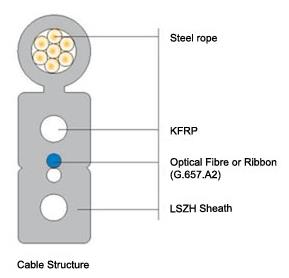-

- Sopto Home
-

- Special Topic
-

- Fiber Optics knowledge
-

- How to Choose fiber optic Cables?
Fiber Optics knowledge
- Maintained Methods of Fusion Splicer Parts
- How to Use the Fiber Optic Cleaver?
- What are Fixed Attenuators & Variable Attenuators?
- Deployable Fiber Optic Systems for Harsh Mining Environments
- Developing Miniature Fiber Optic Cable Has Become the Trend
- Fiber Optic Cleaning Procedures
- 6 Steps to Selecting a Fiber Optic Cable
- Signal Attenuation Introduction
- How Fiber Transmission Works?
SOPTO Special Topic
Certificate



Guarantee
Except products belongs to Bargain Shop section, all products are warranted by SOPTO only to purchasers for resale or for use in business or original equipment manufacturer, against defects in workmanship or materials under normal use (consumables, normal tear and wear excluded) for one year after date of purchase from SOPTO, unless otherwise stated...
Return Policies
Defective products will be accepted for exchange, at our discretion, within 14 days from receipt. Buyer might be requested to return the defective products to SOPTO for verification or authorized service location, as SOPTO designated, shipping costs prepaid. .....
Applications
Fiber Optis can be used in so many fields:
Data Storage Equipment
Interconnects,Networking
Gigabit Ethernet
FTTx, HDTV,CATV
Aerospace & Avionics
Data Transfer Tests
Network Equipment
Broadcast Automotive
Electronics,Sensing
Oil & Gas, Imaging
Outside Plant,Central Office
Harsh Environment
Data Transmission
Illumination,Institutions
Ship to Shore,Education
Simulation,Military,Space
Unmanned Aerial Vehicles
Semiconductor Equipment
Diagnostics & Troubleshooting
Premise Networks Carrier Networks
Independent Telecommunication Providers
SOPTO Products
- Fiber Optic Transceiver Module
- High Speed Cable
- Fiber Optical Cable
- Fiber Optical Patch Cords
- Splitter CWDM DWDM
- PON Solution
- FTTH Box ODF Closure
- PCI-E Network Card
- Network Cables
- Fiber Optical Adapter
- Fiber Optical Attenuator
- Fiber Media Converter
- PDH Multiplexers
- Protocol Converter
- Digital Video Multiplexer
- Fiber Optical Tools
- Compatible
Performance Feature
Fiber Optics knowledge
Recommended


How to Choose fiber optic Cables?
Choosing a fiber optic cable for any given application requires considering two issues, installation requirements and environmental or long-term requirements. Installation requirements include where and how the cable will be installed, such as pulled in conduit outdoors or placed in cable trays in a building. Long term requirements need to consider moisture or water exposure, temperature, tension (aerial cables), or other environmental factors.
You should contact several cable manufacturers (two minimum, three preferred) and give them the specs. They will want to know where the cable is going to be installed, how many fibers you need and what kind (single mode, multimode or both in what we call "hybrid" cables.) You can also have a "composite" cable that includes copper conductors for signals or power. The cable companies will evaluate your requirements and make suggestions. Then you can get competitive bids.

Bow-type Drop Cable with Steel Cores
Since the cable plant design will call for a certain number of fibers, consider adding spare fibers to the cable - fibers are cheap compared to installing more cables. That way, you won't be in trouble if you break a fiber or two when splicing, breaking-out or terminating fibers. And consider future expansion needs. Most users install many more fibers than needed, especially adding single mode fiber to multimode fiber cables for campus or premises backbone applications.
For more high quality and low cost fiber optics, please contact SOPTO.
Related Knowledge:
FTTX Drop Cable Construction Methods
Quality Control in Optical Fiber Production
China FTTH fiber optic splicing best method
How to Strip and Clean Fiber-Optic Cable?





